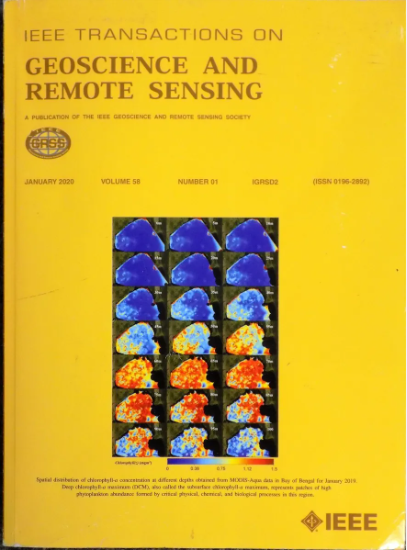大型室外场景多源异构点云精细配准方法
IF 7.5
1区 地球科学
Q1 ENGINEERING, ELECTRICAL & ELECTRONIC
IEEE Transactions on Geoscience and Remote Sensing
Pub Date : 2025-04-15
DOI:10.1109/TGRS.2025.3560669
引用次数: 0
摘要
为了在大型户外场景中提供全面的三维信息表达,多平台、多传感器、多时间点激光点云采集与配准技术得到了快速发展。然而,由于室外环境的复杂性和不同观测平台硬件性能的差异,在空间坐标系不一致的情况下,对多源异构点云进行准确、高效的配准是一项重大挑战。这些挑战包括大量的噪声干扰、遮挡、数据缺失和几何异质性。本文提出了一种基于全连通图和热传导模型的异构点云精细配准方法。具体来说,我们首先使用高斯概率分布框架建立分类特征原语的初始对应关系。随后,采用低级语义关联和刚性转换兼容性检查,快速消除异常值导致的错误匹配关系。作为核心步骤,我们开发了一种基于热传导模拟的同义点选择算法,以准确估计具有有限重叠和离散噪声的点云候选对的鲁棒对应关系。该方法的有效性归功于非线性热扩散拉普拉斯矩阵提供的空间局部几何结构和全局拓扑分布的相似性度量。最后,设计了残差鲁棒损失函数加权的最小二乘模型,结合立面信息求解最优空间变换。在多个实际数据集上的大量实验表明,该方法继承了基于几何的配准策略的有效性和鲁棒性,实现了多源异构点云边缘位置的精确融合,平均均方根误差(RMSE)低于0.06 m。与现有的先进配准方法(如VGICP和Teaser++)相比,该方法具有出色的配准性能,在细粒度三维重建等领域具有广阔的应用前景。本文章由计算机程序翻译,如有差异,请以英文原文为准。
A Multisource Heterogeneous Point Cloud Fine Registration Method for Large-Scale Outdoor Scenes
To provide a comprehensive representation of 3-D information in large-scale outdoor scenes, multiplatform, multisensor, and multitemporal laser point cloud acquisition and registration technologies have experienced rapid development. However, due to the complexity of outdoor environments and the differences in hardware performance across various observation platforms, significant challenges arise in accurately and efficiently registering multisource heterogeneous point clouds with inconsistent spatial coordinate systems. These challenges include substantial noise interference, occlusions, missing data, and geometric heterogeneity. In this article, we propose a heterogeneous point cloud fine registration method based on fully connected graph and heat conduction model. Specifically, we first establish initial correspondences for the classified feature primitives using a Gaussian probability distribution framework. Subsequently, low-level semantic association and rigid transformation compatibility check are employed to rapidly eliminate erroneous matching relationships caused by outliers. As a core step, we develop a homonymous point selection algorithm based on heat conduction simulation to accurately estimate robust correspondences for point cloud candidate pairs with limited overlap and discrete noise. The effectiveness of this approach is attributed to the similarity measure of spatial local geometric structures and global topological distributions provided by the nonlinear heat diffusion Laplacian matrix. Finally, a least-squares model weighted by a residual robust loss function is designed, incorporating facade information to solve for the optimal spatial transformation. Extensive experiments on multiple real-world datasets demonstrate that the proposed method inherits the effectiveness and robustness of geometry-based registration strategies, achieving precise fusion of edge positions in multisource heterogeneous point clouds, with an average root-mean-square error (RMSE) below 0.06 m. Compared to existing advanced registration methods (e.g., VGICP and Teaser++), the proposed method demonstrates outstanding registration performance and holds promising application prospects in fields such as fine-grained 3-D reconstruction.
求助全文
通过发布文献求助,成功后即可免费获取论文全文。
去求助
来源期刊

IEEE Transactions on Geoscience and Remote Sensing
工程技术-地球化学与地球物理
CiteScore
11.50
自引率
28.00%
发文量
1912
审稿时长
4.0 months
期刊介绍:
IEEE Transactions on Geoscience and Remote Sensing (TGRS) is a monthly publication that focuses on the theory, concepts, and techniques of science and engineering as applied to sensing the land, oceans, atmosphere, and space; and the processing, interpretation, and dissemination of this information.
 求助内容:
求助内容: 应助结果提醒方式:
应助结果提醒方式:


